| Adineta sp. 14, creeping specimen, dorsoventral view. Visible are the long acute spurs with interspace. (ratio IW : SBW≈ 1). Even when fully stretched, this morphotype has an appendage of the rump pseudosegment. (1) |
| |
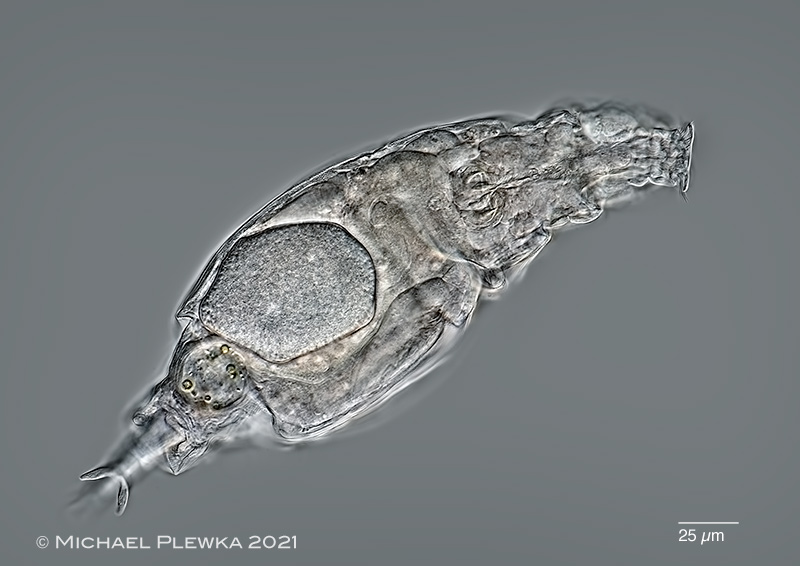 |
| Adineta sp. 14, specimen with egg, dorsoventral view. (4) |
| |
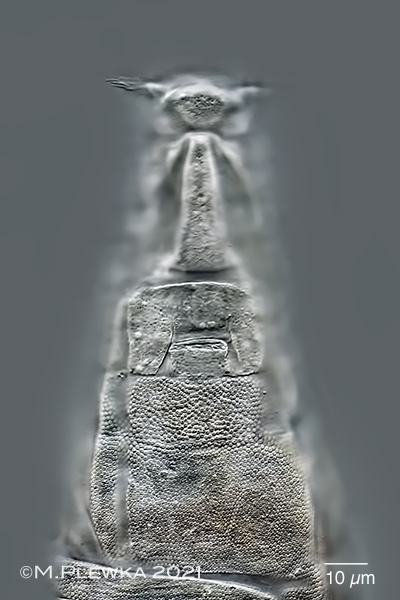 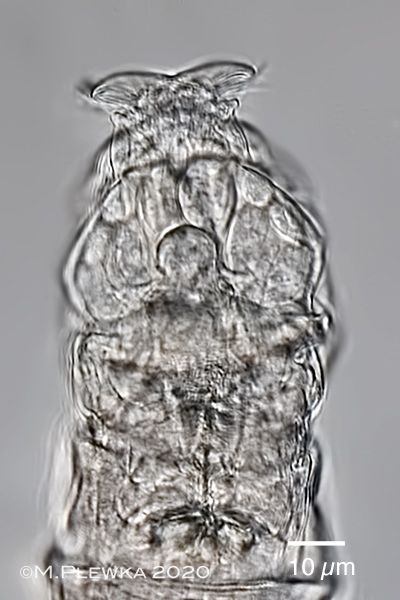 |
| |
| Adineta sp. 14, two aspects of the anterior part; left: dorsal view; focus plane on the integument, which has clearly visible pores, starting at the 1st neck pseudosegment (the head is without visible pores). Right: dorsoventral view; focus plane on the v-shaped rostrum lamella. |
| |
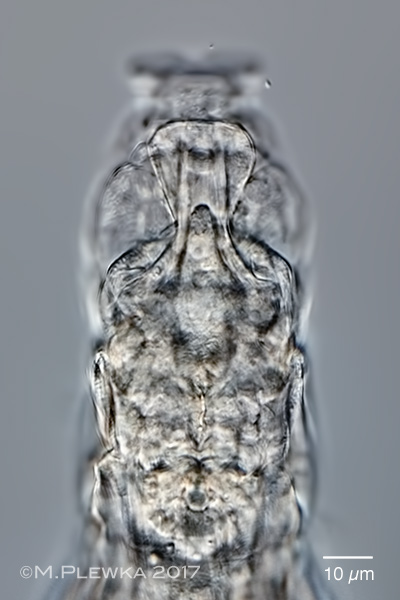 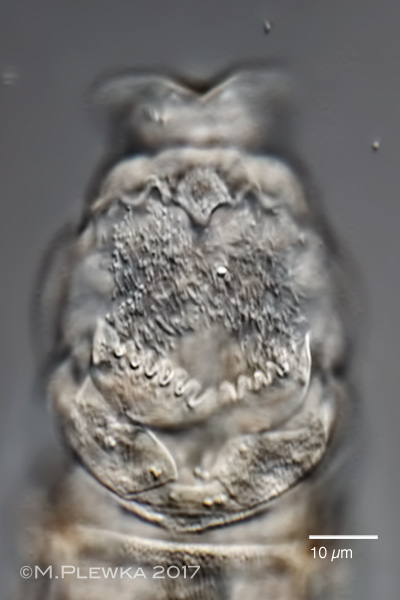 |
| Adineta sp. 14, two aspects of the head, dorsoventral view; left: focal plane on the dorsal ridge. Right: focal plane on the rake apparatus with NoUH: 6/6 |
| |
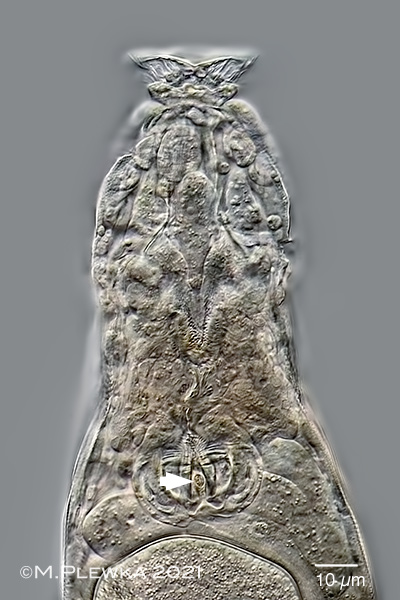 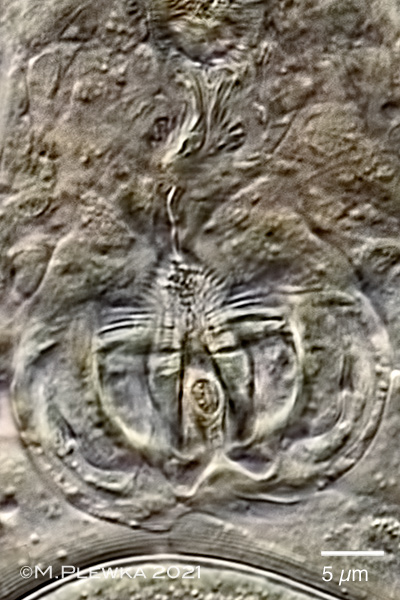 |
| Adineta sp. 14, left image: the arrowhead points to a structure between the two rami of the mastax which may be the opening to the esophagus/ stomach lumen. Right: crop of the left image |
| |
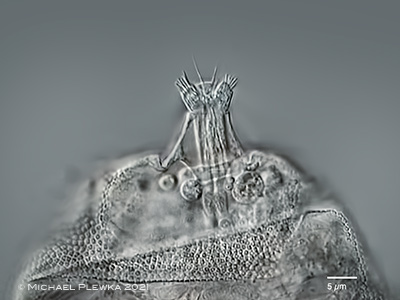 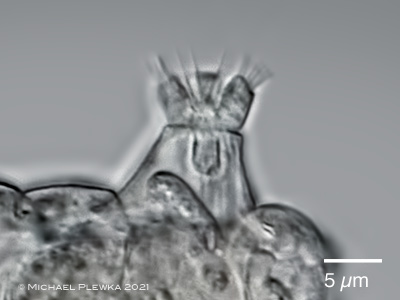 |
| Adineta sp. 14, dorsal antenna, slightly different focus planes. Images not to scale. |
| |
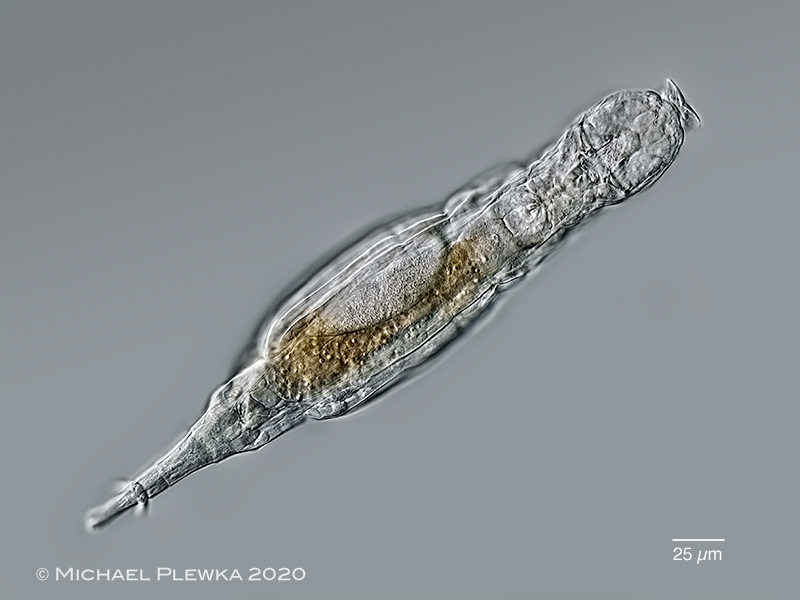 |
| Adineta sp. 14; fully extended specimen from (3), dorsoventral view. |
| |
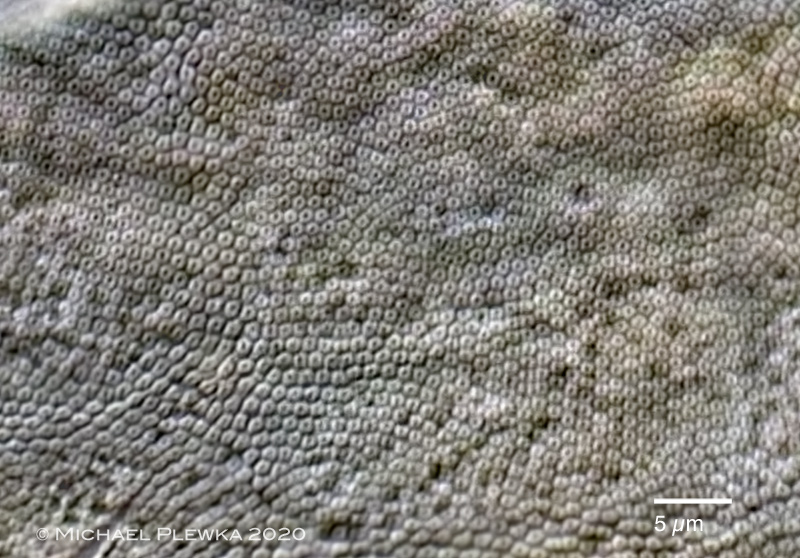 |
| Adineta sp. 14; granulated integument of the trunk. The average distance between the pores is ≈ 1,1µm. (3). There are only a few Adineta-species in which a granulated integument is observed: Adineta tuberculosa and related morphotypes, Adineta sp. 10 (which has a different rake apparatus with NoUH= 4/4 and different spurs) and Adineta donneri. The latter one has similar traits like the morphospecies which is documented here on this page. |
| |
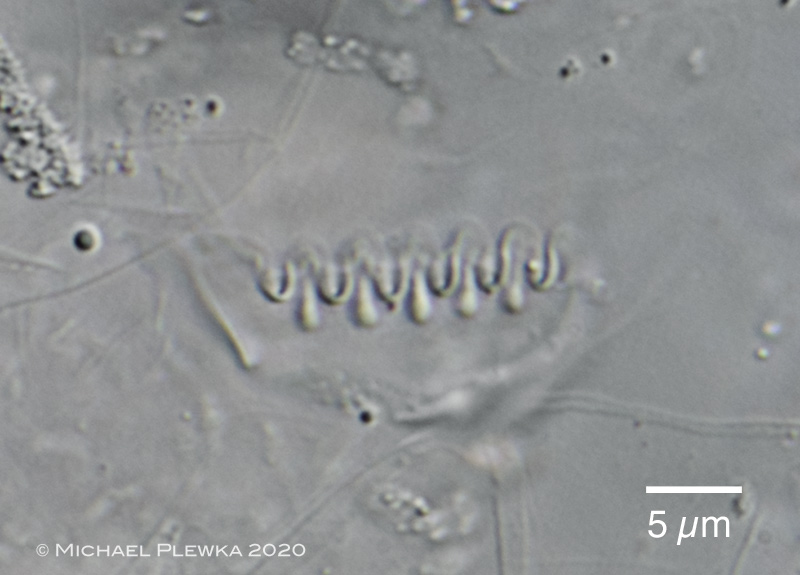 |
| Adineta sp. 14; left rake apparatus, ventral view; NoUH: 6/6 (3) |
| |
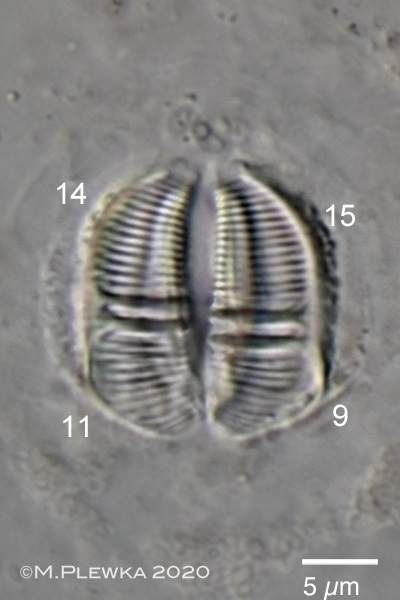 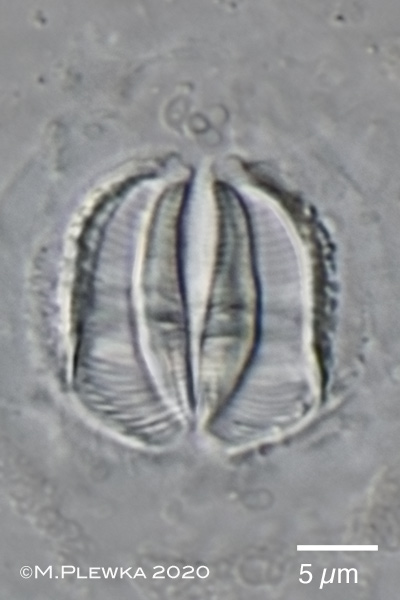 |
| Adineta sp. 14; 2 aspects of the ramate trophi with DF= 2/2. Left: cephalic view; the numbers of the minor teeth are given. Right: caudal view; rami length: 16µm |
| |
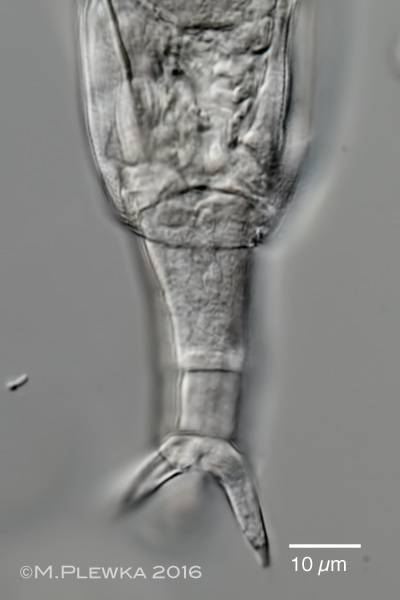 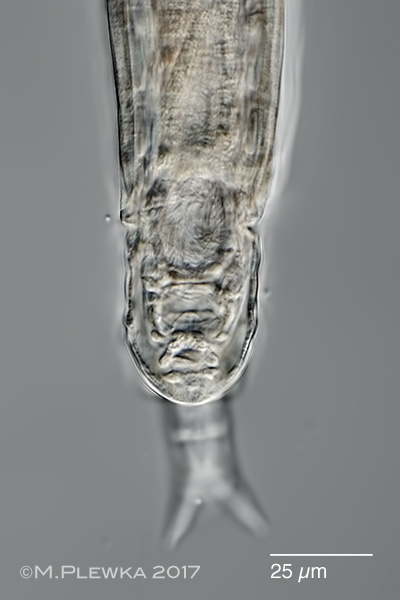 |
| Adineta sp. 14; left: rump and foot with spurs; specimen from (2). In contrast to Adineta sp.10 the integument of the spurs is not granulated. Right: rump pseudosegment; specimen from (1) |
| |
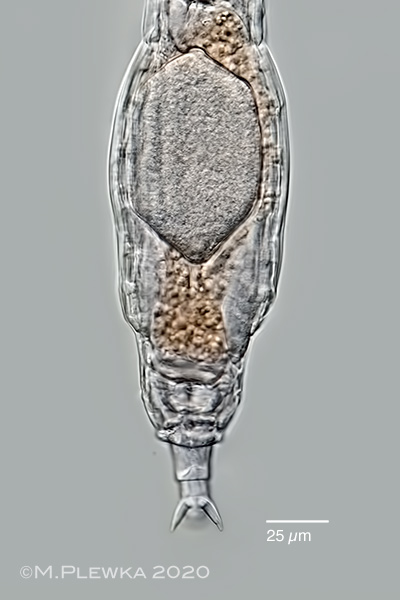 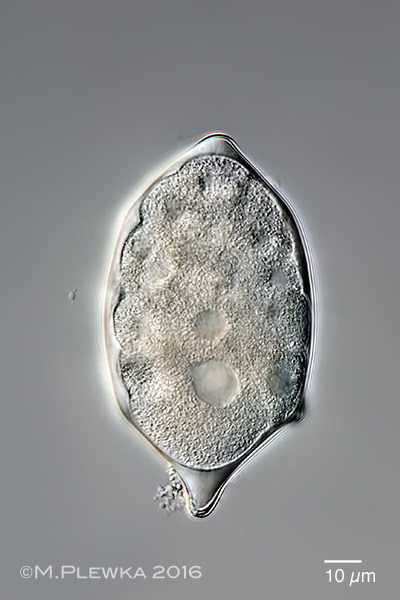 |
| Adineta sp. 14; left: trunk with egg; specimen from (3). Right: egg from a sample from (2), maybe from the same morphotype. |
| |
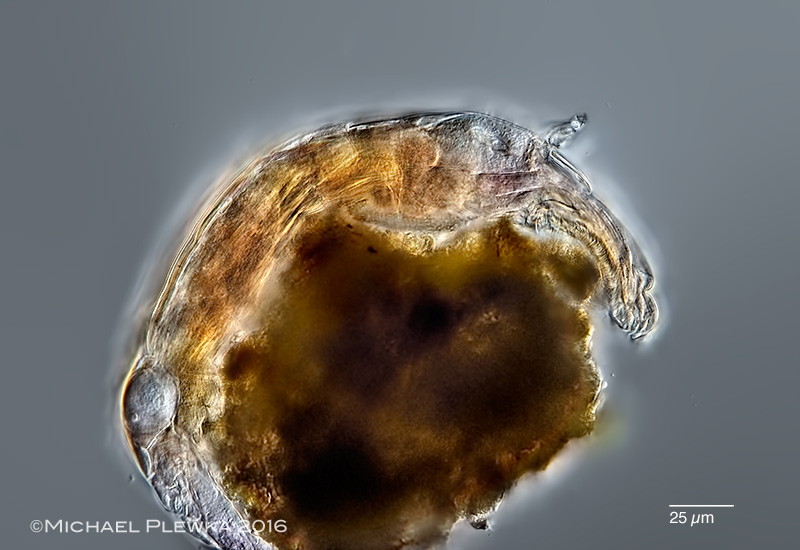 |
| Adineta sp. 14; feeding behavior; in the literature the function of the rake apparatus is described as a tool for scraping off bacteria or other diet from the substrate Adineta is gliding on. But this may be an artefact, because in nature it is very unlikely that Adineta is gliding on a substrate like the glass of the microslide. If one observes Adineta with binoculars in the natural habitat one can see this critter gliding around smaller particles like the one here. The backward movement of the cilia would move the particles away, but the denticles of the rake apparatus are the counterpart of the cilia movement so that the particle is permanentely turned around, so that Adineta can wipe off bacteria from the particle. (2) |
| |
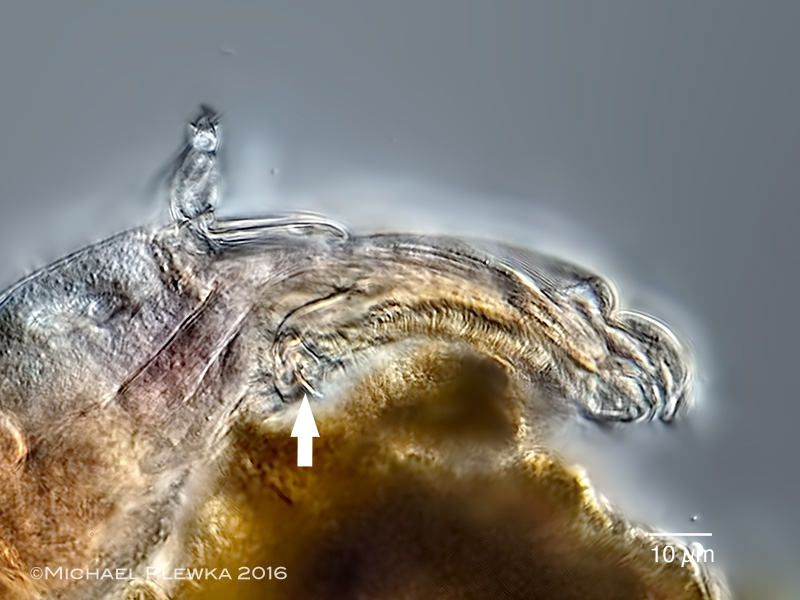 |
| Adineta sp. 14; crop of the above image. The arrow points to the denticles of the rake. (2) |
| >>> Measurements |
| |
|
| Location : Hattingen Oberstüter, roof (1); (3); Hattinge Oberstüter, garden (2) |
| Habitat: dry moss on roof (1); (3); moss on apple tree (2) |
| Date: 26.02.2017 (1); 03.10.2016 (2); 02.07.2020 (3); |